Traditional Kite Making in Santiago Sacatepéquez, Guatemala
“Diamond” kites range up to 10 meters in diameter and have a diamond-shaped frame and long tails. “Moon” kites are large circles of bamboo framing with a circular center, and range from 10 to 15 meters in diameter.
On November 1 and 2, Guatemalan markets are filled with marigolds, chrysanthemums and copal—a pre-Columbian incense made from pine resin. People clean family graves and adorn them with cut tissue paper called papel picado, flowers, and candles. They also honor the dead with festive foods such as candied fruits, tamales, and fiambre (a cold meat and vegetable dish prepared only at this time of year). These dates mark the celebration of El Día de los Difuntos or “the Day of the Dead,” a very important festival throughout Guatemala, especially in the predominantly Kakchiquel town of Santiago Sacatépequez, where a colorful kite-flying ritual takes place.
Preparations for Day of the Dead begin 40 days before November 1, when youths begin the construction of the kites, a tradition dating back at least 110 years. Customarily, men did most of the work, but today women join them in creating the intricately designed kites, which may have political, religious, or cultural themes. There is now a female kite-making contingency in Sacatepéquez that competes in the annual kite-making competitions.
Before the kites can be made, the unmarried men of the village travel to the coast to hunt for bamboo for the frames. In the eyes of the town, this journey marks males’ passage from boys to men. The trip to the coast is difficult and the work of cutting the thick bamboo is laborious. They return from the coast to find the townspeople awaiting them, eager to hear of their adventures. The bamboo is distributed to the kite-making groups to begin making frames, a process that continues every day until the Day of the Dead.
Women’s role in the celebration has historically been less public than that of men, but crucial. They participate in the measurement, design, and construction of the kites, prepare the glue ingredients and kite materials, and help decide on colors and designs. Women also do the bulk of the festival food preparation, as well as the decorating of churches and public squares.
All kite materials are natural. The glue is made from yucca flour mixed with pieces of lemon peel and water. Ropes used for kite strings are made from maguey, the plant from which tequila is extracted. Kite tails are made from woven cloth (to which people often attach hand-written messages to the spirits). Woven stalks of castilla, a plant similar to wheat, form the frames of smaller kites, while the largest frames are made from bamboo.
The kites display three main styles: “Crown” kites measure from three to five meters in diameter and have a circular frame around an empty center, like a donut. The inner and outer circles are connected with four bamboo stalks.
On November 1, people in Santiago begin to fill the cemetery at 4:00 a.m. While cleaning, repainting, and decorating their family tombs, neighbors fondly reminisce about the deceased, and catch up on the latest news. Community bonds are renewed and strengthened as people work side by side, sharing paint, tools, and brushes to refurbish tombs, while they water flowers, pray, and picnic together. It is a happy time.
Young people await a strong wind to raise their giant kites to the skies, beckoning the traveling spirits until 4:00 p.m., when the kites are lowered and the townspeople return home to await the arrival of the souls. People may set up home altars in honor of deceased family members, and relatives and neighbors visit each other to pay their respects. Visitors are offered boiled güisquiles (a green vegetable), sweet corn, and chilacayote (sweet squash), along with chicha, a hot fermented corn beverage.
Eventually, there is a procession through the streets, with residents playing the harp and accordion to the delight of the public. The townspeople travel with the procession from house to house throughout the night, sharing traditional foods and alcohol along the way.
At 4:00 a.m. on November 2, the procession moves toward the cemetery with candles. The townspeople raise the giant kites one last time to guide the spirits back to heaven. Later that evening, kites torn by the winds are burned inside the cemetery, the smoke guiding vagabond spirits to the skies. The surviving kites are exhibited in the local Catholic church during a novena for the deceased, after which they are burned and the ashes buried in the cemetery, completing the annual ritual for the Day of the Dead in Santiago Sacatepéquez.
Kites from Santiago Sacatepéquez will be on exhibit at the Fundación Nahual (2a av. norte 6-B, La Antigua. tels: 7832-0167, 5985-4954) throughout the month. Since 2004, the Fundación Nahual has conducted public kite-making workshops led by young kite builders from Santiago Sacatepéquez. One of the Nahual Association’s goals is to strengthen local Kaqchikel youth groups by giving them opportunities to teach about their cultural traditions. For more information, visit or call the Fundación.
Ignacio Ochoa holds MA degrees in Latin American Studies and Philosophy and has worked in Indigenous, rural, and refugee communities in Panama, Colombia, Ecuador, Nicaragua, El Salvador, Mexico and Guatemala. He has taught at San Diego State University, the Harvard University School of Business, Northeastern University, San Carlos University and the Jesuit Landívar University. He was one of the judges for the Santiago Sacatepéquez kite competition from 2005-2007.
- Ochoa (rt) with some of the royalty of the 2008 Santiago Kite Festival
- A guided tour group prepares to journey to the celebrations at Santiago Sacatepéquez
- A project underway at the kite workshop, Nahual Foundation
- Kite workshop graduates display their creations at the Nahual Foundation
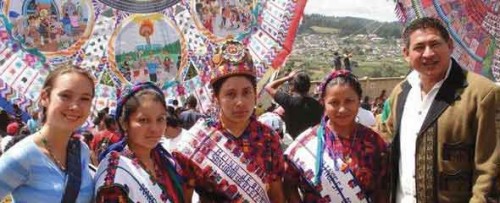
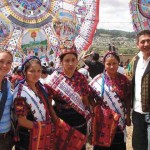
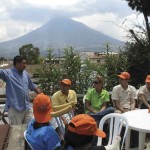
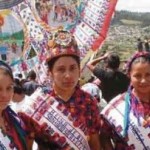
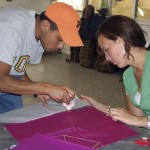
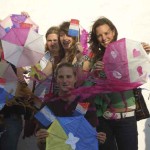
Pingback: Traditional Art of Kite-Making Celebrates the Day of the Dead | ArteAntigua
Pingback: Dia de los Muertos – Guatemala « Greg & Susan – Travels and Adventures
Pingback: October – November Traditions in Guatemala – Revue Magazine